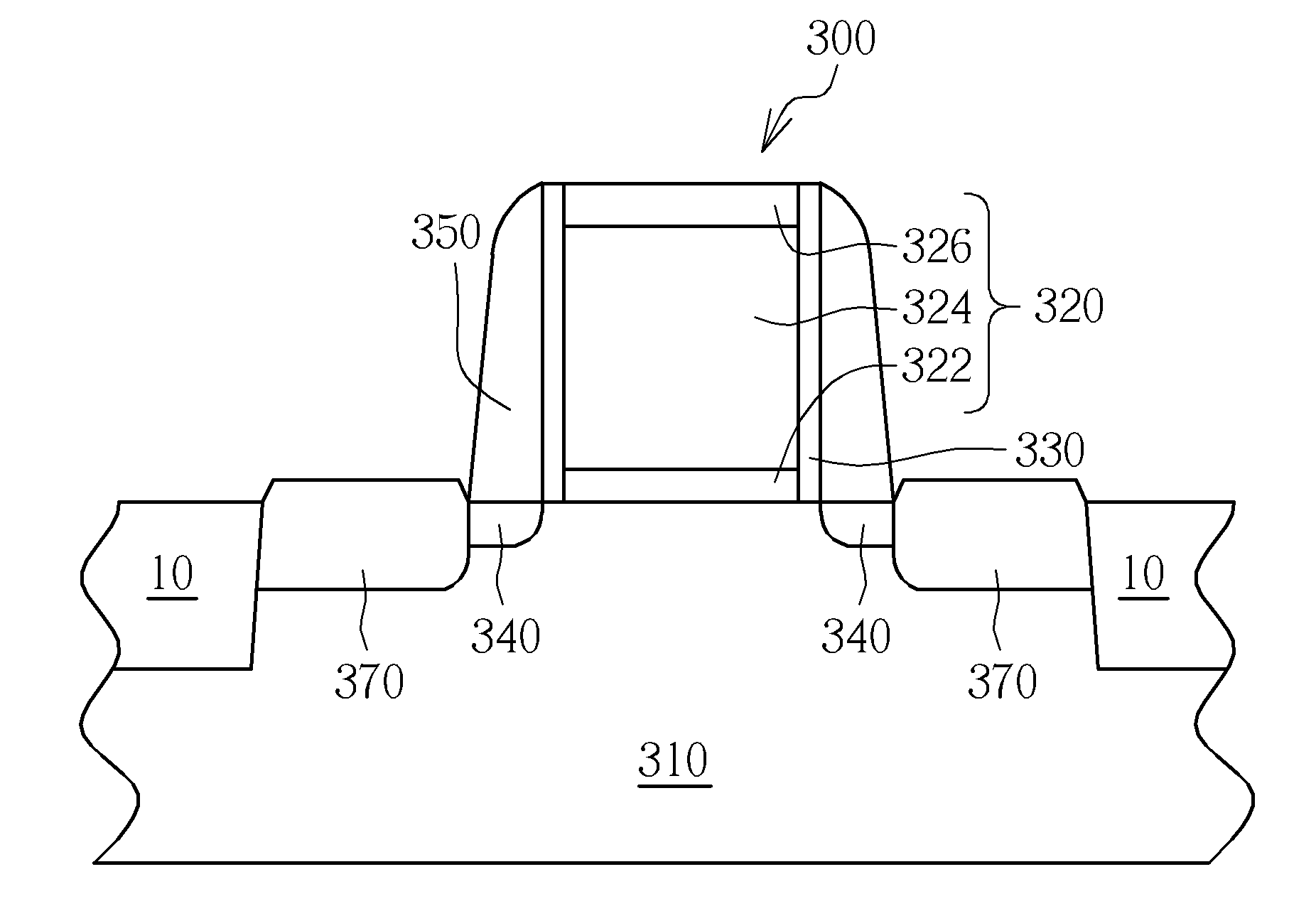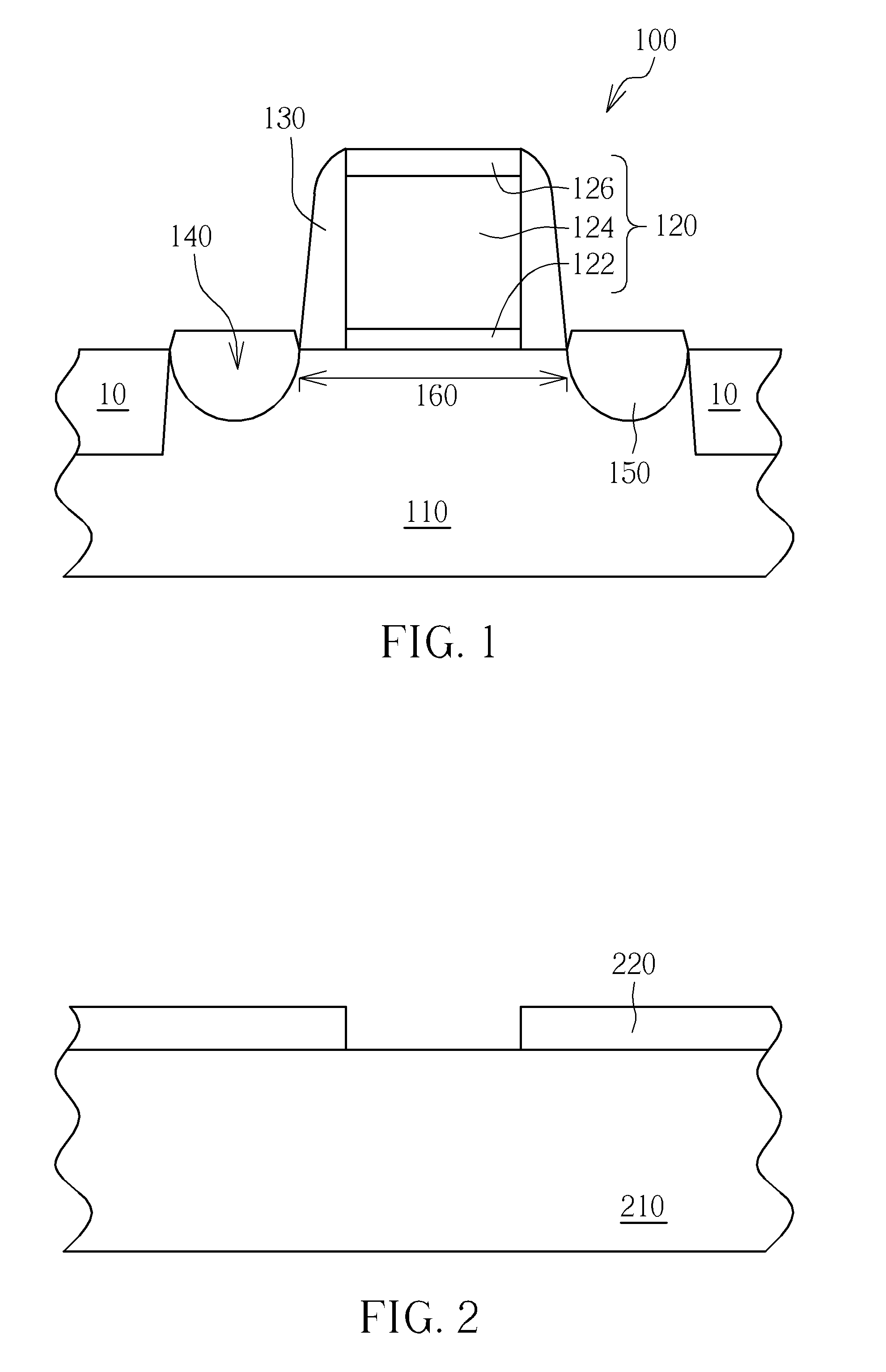Method of fabricating an epitaxial layer
a technology of epitaxial layer and layer layer, which is applied in the direction of basic electric elements, electrical apparatus, and semiconductor devices, etc., can solve the problems of unstable electrical performance of mos transistors and difficult control
- Summary
- Abstract
- Description
- Claims
- Application Information
AI Technical Summary
Benefits of technology
Problems solved by technology
Method used
Image
Examples
Embodiment Construction
[0016]FIGS. 2-4 schematically depicts a method of fabricating an epitaxial layer according to one preferred embodiment of the present invention. Refer to FIGS. 2-4, a substrate 210 is provided, wherein the substrate 210 includes a semiconductor substrate such as a silicon substrate, a silicon containing substrate, or a silicon-on-insulator (SOI) substrate. A patterned mask 220 is formed on the substrate 210 (As shown in FIG. 2). In this embodiment, the mask 220 may be a silicon nitride layer, and more specifically may be a silicon nitride layer formed by a precursor of hexachlorodisilane (HCD). The mask 220 may be patterned by methods such as etching lithography method, but it is not limited thereto. In another embodiment, the mask 220 may be also made of other materials, and the mask 220 may be formed by a precursor of chlorine containing material or formed by chlorine containing materials, thereby forming the surface of the substrate 210 being attached with chlorine and a chlorine...
PUM
| Property | Measurement | Unit |
|---|---|---|
| temperature | aaaaa | aaaaa |
| lattice constant | aaaaa | aaaaa |
| band structure | aaaaa | aaaaa |
Abstract
Description
Claims
Application Information
 Login to View More
Login to View More - R&D
- Intellectual Property
- Life Sciences
- Materials
- Tech Scout
- Unparalleled Data Quality
- Higher Quality Content
- 60% Fewer Hallucinations
Browse by: Latest US Patents, China's latest patents, Technical Efficacy Thesaurus, Application Domain, Technology Topic, Popular Technical Reports.
© 2025 PatSnap. All rights reserved.Legal|Privacy policy|Modern Slavery Act Transparency Statement|Sitemap|About US| Contact US: help@patsnap.com



